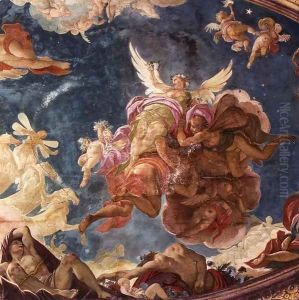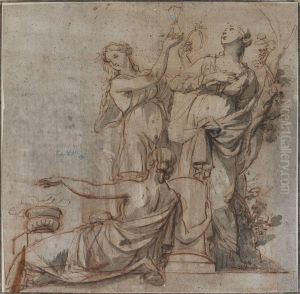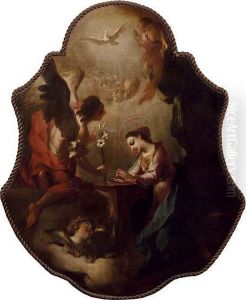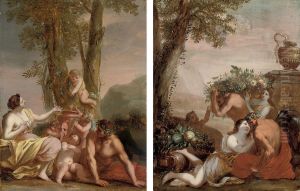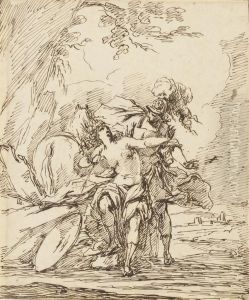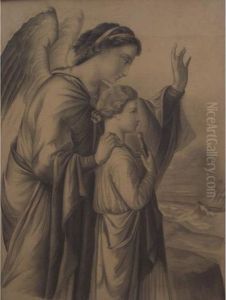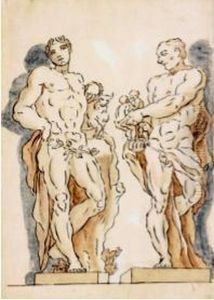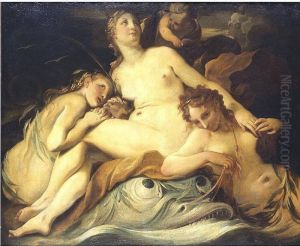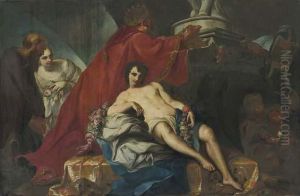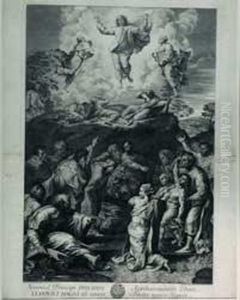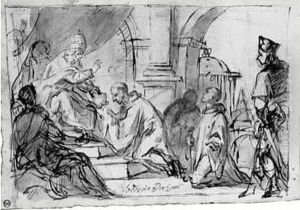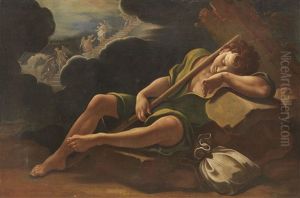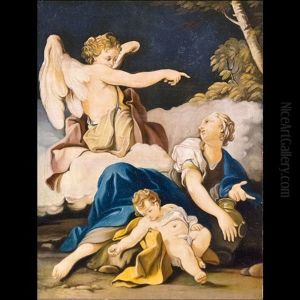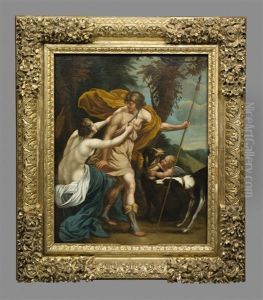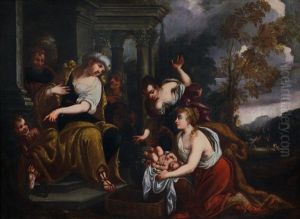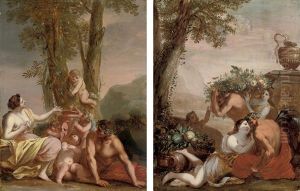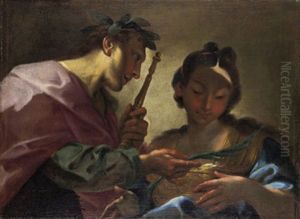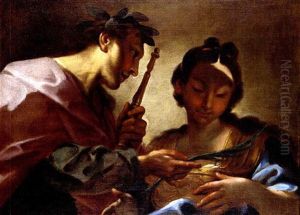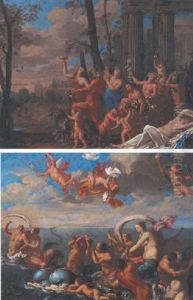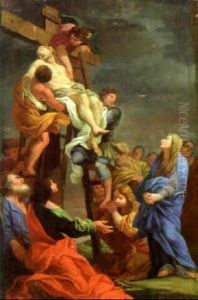Louis Dorigny Paintings
Louis Dorigny was a French painter and engraver born in Paris in 1654. He was part of a dynasty of artists; his father, Michel Dorigny, was a well-known engraver, and his grandfather, Simon Vouet, was a prominent painter who played a significant role in introducing the Baroque style to France. This artistic lineage provided Louis with a rich environment for developing his skills and style from an early age.
Dorigny initially trained under his father and later continued his studies under the guidance of his uncle, Charles Le Brun, who was the leading French artist of the time and the primary creator of the grandiose style of Louis XIV. Under Le Brun's tutelage, Dorigny honed his craft, particularly in the areas of historical and mythological painting, which were highly prized in the grand decorative schemes of the period.
In 1685, Dorigny moved to Italy, where he spent a significant portion of his career. His time in Italy was pivotal; he was influenced by the works of the great Italian masters, and his style evolved to incorporate the vibrant colors and dynamic compositions characteristic of the Italian Baroque. While in Italy, Dorigny worked on numerous commissions for churches and palaces, his work celebrated for its elegance and expressive figures.
One of Dorigny's most notable projects in Italy was his work at the Church of San Silvestro in Capite, Rome, where he painted several frescoes. His success in Italy also led to commissions from other European courts, and his work was instrumental in spreading the Baroque style across the continent.
Dorigny returned to France later in his life, where he continued to work and receive commissions. Despite the changing tastes of the art world, with the Rococo style coming into vogue, Dorigny maintained a steadfast adherence to the Baroque style until his death in 1742.
Throughout his long career, Louis Dorigny remained a respected figure in the European art scene. His legacy is preserved in the numerous works he left behind, which continue to be studied and admired for their artistic merit and historical significance.
